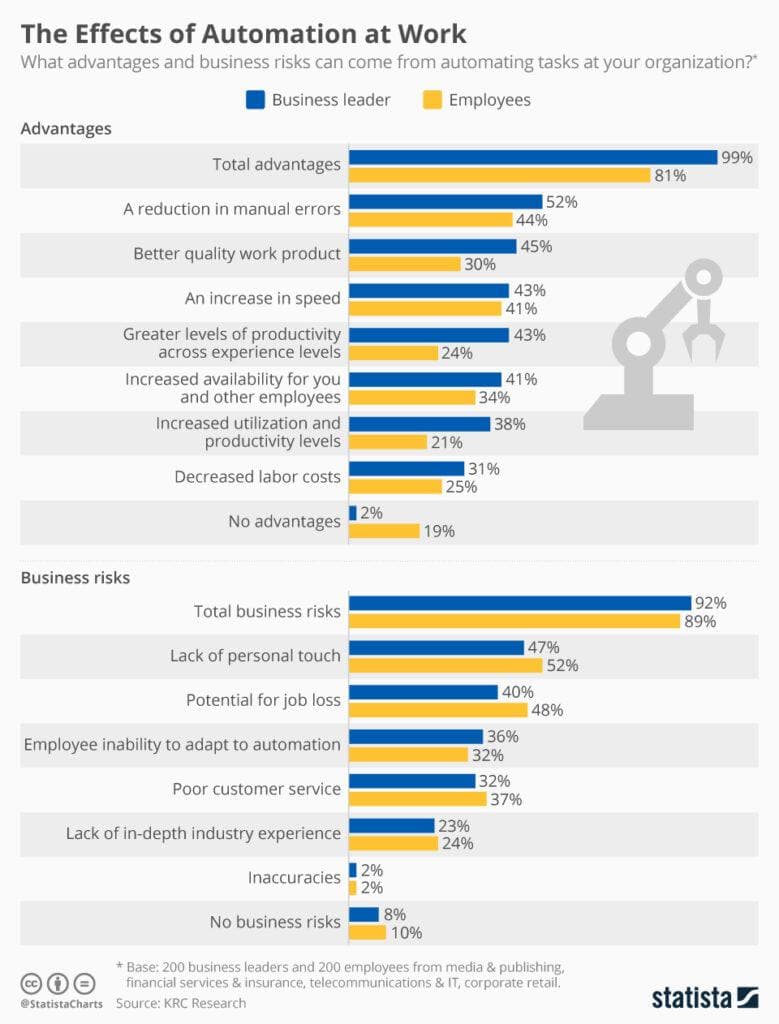Dec 18, 2019 | 5 minutes
Bench Policy: Why Companies Need It in the Era of Automation and Reduced Workweeks
What role do automated workflows play in the discussion around the number of hours we dedicate to work?

A few weeks ago, a strong series of tremors were felt in one of the pillars of modernity: the 8-hour workday.
The epicenter of these tremors was an experiment called “Work-Life Choice Challenge Summer 2019”, in which Microsoft Japan employees saw their workweeks reduced from 5 to 4 days without loss of pay.
Other measures, such as limiting the duration of meetings to a maximum of 30 minutes, were also included in the experiment as well. The results were more than impressive: compared to the same period of last year,
Productivity had risen by 40%
Electricity consumption had fallen by 23%
Printed pages had fallen by 59%
Microsoft’s experiment with reduced workweeks was not the first of its kind in recent times, nor the only one that yielded positive results. Previous experiences in the UK, Romania and New Zealand saw increased customer and staff engagement levels, improved work-life balance, and a reduction of costs due to less power being used.
But why is this happening?
Groundhog workday
The 8-hour workday did not appear out of the blue. In fact, it’s nearly reckless to discuss it without stopping at the historical context from which it emerged. The place was Scotland, and the year, 1817.
We are looking at the first industrial revolution, which enabled the mass-scale transition from hand production methods to machines and tools.
These were the times of steam-powered factories and mechanization, but also of Dickensian work conditions in which child labor, 14-hour workdays, and poorly-sanitized, overcrowded workspaces were rampant.
It is in this grim context that the 8-hour workday was first proposed by Welsh industrialist Robert Owen.
Even though decades would have to pass until Owen’s ideas saw widespread adoption, standard worker conditions remained harsh, when not borderline brutal.
The question here is rather obvious: if productivity is being thwarted by a centuries-old work scheme designed for the nascent industrial era, what’s the point in sticking to it?
Automation, productivity, and the search of happiness
A series of realities and technological advances have brought back the discussion around the number of hours we dedicate to work. Some of these include:
High levels of burnout among workers
Stagnant wages
Automation
Burnout is prevalent among the working population, with IT professionals topping the lists of most-stressed workers. In addition, productivity in the US has doubled wage growth since the late 1970s.
And in the past few years, advances in automation tools have been instrumental in improving quality and delivery times while reducing costs and errors.
Source: Statista
Just like changes were needed at the peak of 19th-century industrial revolution, changes are needed today, at the cusp of our very own digital revolution.
On the other hand, it is safe to assume that as much as we cheer for 4-day workweeks, changes won’t happen overnight. Instead, it may be wiser to focus on incremental changes like flextime, remote work, and functional bench policies.
Dynamic companies, dynamic bench policies
The bench is not a physical place, but a status: it refers to employees that are not working on any project, but nonetheless remain part of the company and receive a salary.
In industries like IT and marketing, benching is a rather common practice, because projects get killed (or change directions) all the time, and you can’t always “plug-and-play” someone at a new project or area.
Curiously enough, benching is common, but clearly defined bench policies aren’t.
A quick search on company-review site Glassdoor shows quite a high number of employee voices complaining about the lack of good bench policies, for example:
“Your long-term employees deserve better than a 3-week bench and being terminated just because an assignment couldn't be found quickly enough.”
“No bench policy so if you are not in a project can be asked to leave.”
“No internal transition between teams and no bench concepts.”
“Bench policy is terrible, company expects loyalty but when there aren’t enough projects to go around, they put you on the bench and it's see ya!”
As you can see, it’s a sensitive topic (thus the anonymity for both employees and companies). What do most reviews show?
Basically, that many workers expect something positive from getting benched, but instead get a rough deal: job insecurity, increased stress levels and in some cases, layoffs.
On top of this situation comes the automation factor: with the widespread adoption of workflow automation products, the number of employees who get benched will likely increase.
Bench policy: Comfy chairs or hot seats?
The answer is neither. The bench should not make your workers insecure, nor left them idle. A good bench policy:
Reconsiders the worker’s skill set and tries to match him to an appropriate project and team
Updates workers before they join new available projects
Serves as a space for learning and capacitation
In the case there isn’t any project available, the bench should provide the worker with a range of options
The ultimate goal of a good bench policy goes beyond retaining an employee: it’s about making the employee better.
This means to provide purpose and means, as well as to reach out to the employee with regularity to discuss progress and opportunities.
Time to level up
Learning is one of the biggest opportunities bench-time offers. HR professionals know this. Upper management knows this too.
Finding time and space is what complicates everything, but it doesn’t have to be that way. In this line, the bench can be used to:
Foster learning. Establish a learning budget and make courses and programs available to employees
Kickstart a vocational program. Some of your employees might be struggling at their jobs, but that doesn’t mean they have to. A little orientation can work magic for everyone
Advance digital transformation and change management policies. The bench can be used as a short-term bet on productivity by implementing learning programs for automation tools like Make
Industries like marketing, IT, accounting, law, and professional services can instantly benefit from having workers that are knowledgeable in workflow automation.
Workflow automation and app integration tools are key to successful digital transformation efforts, and aligning these with the bench is a win-win situation.
To conclude, you can start slow and small. There are lots of free educational programs online, and most digital tools offer free versions that allow for extensive testing and learning.
We are living in exciting times, and tools like Notion, UI Bakery, Lobe, and Make - among many others - give us an opportunity to work less and do more.
Isn’t this what we all want?
Bring all your tools together with Make, a web-based tool to connect apps and automate workflows using a beautiful, no-code visual builder. The inbuilt HTTP app enables you to connect to any web service or API without writing a single line of code.
Make’s free plan comes with all its powerful features. Give it a go and you might just fall in love!
Ready to make the automation revolution happen?


